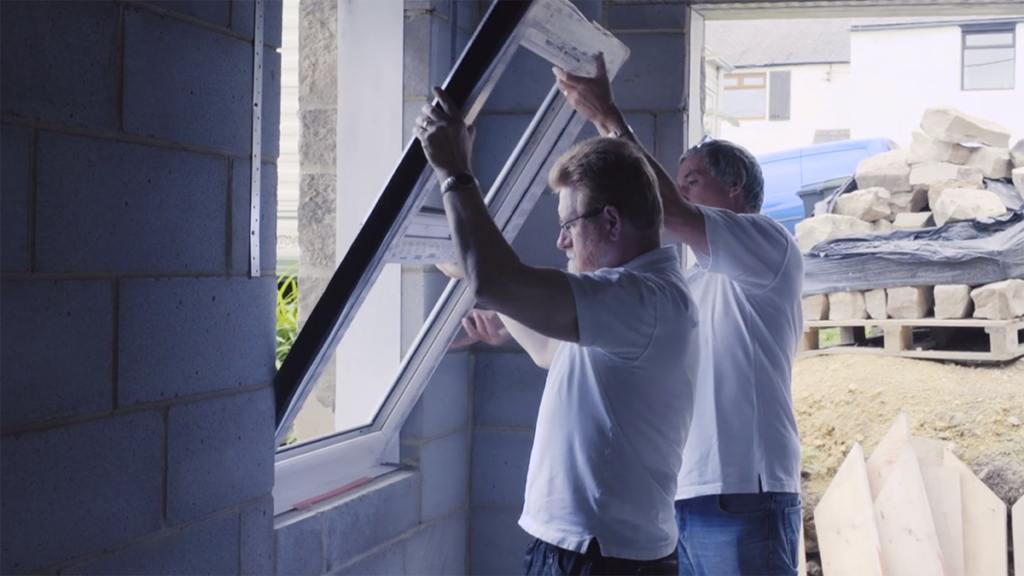
Andy Swift, sales and operations manager at Iso Chemie, explains why he believes that architects who adopt new approaches to sealing specification will improve the energy efficiency around window and door installations
THE Business, Energy and Industrial Strategy (BEIS) Select Committee’s report, Energy Efficiency: building towards net zero, which follows recommendations laid out in the 2018 National Infrastructure Assessment, stresses the importance of pushing more energy efficient buildings to help the UK meet its carbon reduction targets cost-effectively.
Specifically, it flags concerns that currently, public investment is inadequate when it comes to making homes energy efficient and urges that greater attention and priority should be given to home insulation.
The move also comes hot of the heals of an earlier report by the Committee on Climate Change (UK Housing Fit for the Future, February 2019) into energy efficiency in homes, which called for all new homes to be built to be as thermally efficient as possible.
These reports – the latest in a long line of similar studies – showcase seeming indifference among government ministers when it comes to propagating more energy efficient housing, rebuffing simple yet effective home insulation measures that could help people to pay less than they need to tackle climate change.
Undeniably, home insulation installations are among the cheapest carbon cutting measures, reducing energy bills by £100 a year on average. However, the cancellation of government incentives has seen a 95% fall off in work in this area since 2012, according to the Committee on Climate Change.
Despite great strides in modern housing design and development, evidence points to doors and windows continuing to be among the biggest culprits when it comes to energy inefficient homes. Indeed, it might be said that in the light of product innovation, its almost ‘criminal’ that so many fenestration installations remain unchecked or unregulated, leaving a legacy of problems that last for years and cost hundreds of thousands of pounds to rectify.
This is a pity because with advancements in cost effective, simple to use technologies, there’s no longer any justifiable reason for procrastination around the specification of energy efficient window and door sealing solutions.
Heat will always find the fastest exit as it comes up against the ‘A’ or ‘A+’ rated window, and invariably this emanates from the 10mm or so expansion gap left around the window following fitment. This is normally left empty, but some amount of spray foam can be injected to fill the void before a silicone trim is applied for a smart looking finish.
Unfortunately, as expedient as this might sound, none of these solutions create a measurable, long-term, high performance thermal, acoustic or airtight barrier – the U-Value of the installed window is simply reduced, which leads to heat escape and ultimately, financial loss.
If building regulations remain lenient, we will continue to see window and door developments that only just comply with the minimum standards. But the industry deserves better insulating products to improve energy efficiency and save money for their end-users, and self-adhesive foam sealing tapes, which use ‘smart’ foams impregnated with different substances to create a measurable U-Value as low as 0.6w/m2k, offer superb thermal insulation and can contribute to acoustic sound reduction by 63dB.
As these installation tapes are completely weather tight against driving rain up to hurricane force wind speeds, installers can quickly apply them around the frame during initial fitting. This provides the assurance that they have completed a comprehensive ‘A’ rated installation rather than just supplying an ‘A’ rated window. This is a benefit that can be sold on to deliver enhanced energy efficiency advantages for customers and property owners.
There’s no question that those responsible for fenestration specification can do more to support greater energy efficiency. Technical innovation through sealing technologies is one way that this can be achieved. Indeed, as sustainability continues to be paramount in the development of low carbon and eco-friendly housing schemes, we are seeing technologies such as foam tapes gaining traction as effective solutions for sealing window and door frame expansion joints and gaps in houses.
The challenge for new technologies is to provide those at the sharp end of designing the built environment with the confidence to assure customers that energy efficiency is at least as good as the window.







